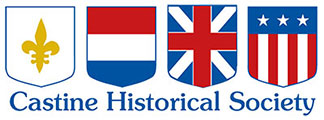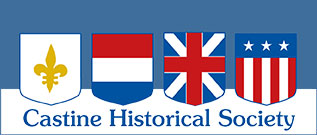2025 Exhibition: A History of Castine in 40 Objects
June 9-October 13, 2025
Historical Societies exist to tell a community’s history through objects and archival records. In a new exhibition, “A History of Castine in 40 Objects,” the Castine Historical Society will highlight aspects of the town’s history through never-before-displayed objects from our permanent collection. Forty unexpected and compelling artifacts weave together almost 400 years of Castine history.
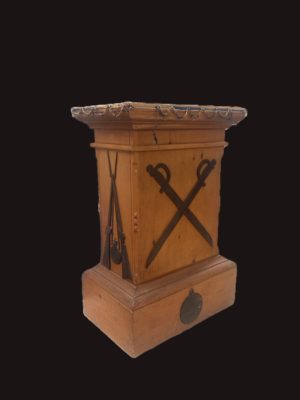
Grand Army of the Republic Altar, late 19th century Castine Historical Society, Donated by the Town of Castine
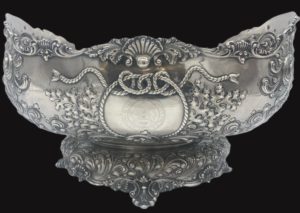
USS Castine Silver Fruit Bowl, 1893 CHS purchase
Each of the objects in the Castine Historical Society’s permanent collection is a window into our town’s history. For this exhibition, a team of community members and staff selected objects that tell Castine stories that are both familiar, like the town’s Revolutionary War history, and unexpected, such as our African American history.
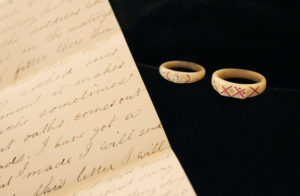
Civil War bone rings carved by Pvt. Henry Butler, 1864. Collection of CHS
The exhibition is divided into themes that help visitors dive into these fascinating stories of the past and present. “Castine at War” looks at why the peninsula was fought over by major world powers but also examines how subsequent wars, including those not fought in town, affected the average Castine citizen. “Castine at Sea” not only delves into the careers of wealthy ship captains but also the people who worked on the docks to support this maritime trade. “Castine at Work” explores how politics, community organizations, and occupations contributed to shaping the town. The exhibition concludes with “Castine and the Arts,” which examines the significant role the arts, artists, and writers continue to play in this community.
One exhibition can never tell the full sweep of a town’s history. Since the exhibition is based on what is currently in our permanent collection, visitors will have the opportunity to tell us, “What are we missing?” For instance,
visitors will notice that the long and continued history of Native peoples on this land we now call Castine is not addressed in the exhibition. This is due to gaps in our collection that can tell this important history. In the coming years, with input from stakeholders, CHS looks forward to filling in these and other gaps in the permanent collection to help us better tell the diverse and full story of Castine.
